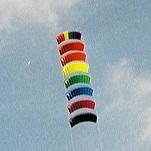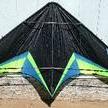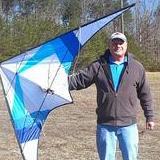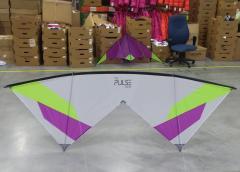Leaderboard
-
in all areas
- All areas
- Marker
- Marker Comments
- Marker Reviews
- Adverts
- Advert Questions
- Advert Reviews
- Articles
- Article Comments
- Article Reviews
- Blog Entries
- Blog Comments
- Files
- File Comments
- File Reviews
- Events
- Event Comments
- Event Reviews
- Images
- Image Comments
- Image Reviews
- Albums
- Album Comments
- Album Reviews
- Topics
- Posts
- Status Updates
- Status Replies
-
Custom Date
-
All time
June 25 2009 - April 20 2024
-
Year
April 20 2023 - April 20 2024
-
Month
March 20 2024 - April 20 2024
-
Week
April 13 2024 - April 20 2024
-
Today
April 20 2024
-
Custom Date
05/23/2018 - 05/23/2018
-
All time
Popular Content
Showing content with the highest reputation on 05/23/2018 in all areas
-
@breezin, that would be john chilese. Not there all the time, but always nice when he shows up.2 points
-
I do realise that without knowing the exact make and shape and size of the kite lifter and laundry this is going to be difficult for many to answer. I want to talk rigging, I have been through the search section and back catalogue of posts and I cant find what I am looking for. Starting from the lifter at the top of the line and down to a perfect anchor point is going to be one single line. At the moment I use small snap hooks to clip on a single flat flag with the bottom of the flag fitted with a small adjustable line and a second snap hook. nothing special just a beginners starter. I was watching someone rig up their line laundry last week and he had a completly different set up. ok he was fitting larger inflatables but that guy had a main line from anchor to the lifter then he added a snap hook with the line laundry inflatable on it, but that then had its own main line running down to the anchour point and the second inflatable he clipped on also had its own main line running to ground as well. is it normal to have a main line for each item of inflatable line laundry? I can understand it with larger items but these were six foot ducks1 point
-
For my next trick, I'll double a French military kite and add a delta. Dimensions are looking to be about 9' at the base, and 3' across from the edge of one triangle section to the edge of the other. I like the color scheme I came up with for my sled. So, I'm going to keep it. Here's the concept:1 point
-
When you set up to fly, check everything! Visually inspect for twists and tangles in the bridle. Check the bridle settings and the Prussik knots to make sure everything is symmetrical and locked in. Verify that your lines are of equal length. Verify wind direction. Relax. Launch. Fly. Smile. Breathe. Rinse and repeat. You'll have less and less days like that as time goes on and you begin to do some of the basics automatically, without thinking about it. You'll eventually be able to tell the lines are off, one second after you launch. It gets easier every time. Hang in there. You'll survive. Take frequent breaks. Choose your wind so it will help you. If the wind sucks don't fly. In time you'll be able to fly in that crap and you won't realize it happened until you're flying in it. It's all about time on the lines. You'll hear that phrase repeated often. Experience beats the crap out of everything else. You'll get there. You've already covered a good portion of that distance. P.S. -- There's only one s and two i's in shiitake (shitsake).1 point
-
i forget to mention something important. each inflatable will have his own pull so.... kite line must to have the strength for kite plus the laundry pull. almost for sure that is the reason you see it (on your opinion) to big kite lines used by flyers.1 point
-
1 point
-
I fly quads mostly, dualies at times. But I started with dual line and kept going. Took an enforced break for a couple years, then got back into flying. Group flying really got my attention, but it took a while to regain my hand, eye coordination needed. Then I joined a team of quad fliers. That brought my game up. Then I learned indoor flying, brought my game up more. Then I joined a second team!! Biggest thing I got out of it?? Confidence!! Found something I could still do and do well !!! That keeps bringing me back!!!1 point
-
Ya'll are way, way overthinking this!!! Fly the thing!!!! Messing around with everything - grumble, mutter, BLEEP!! 😜1 point
-
I would take a look at Gomberg’s website. He knows a thing or two about this topic. http://gombergkites.com/line.html Sent from my iPhone using KiteLife mobile app1 point
-
if the lifter kite is have enough pull you may add more then one laundry1 point
-
1 point
-
They slide a long the line to help maintain stability. Pick the kite up by the tow points.Hold them with kite on it's back in the air. Look down and slide the 2 knots around. Don't undo anything.You'll start to get the idea behind the method.Doubt there is anything amiss . After doing that and you still think it's off others here will walk you thru it.There are different types of bridles and I still got quite a bit to learn on the how and why of the designs. How to make them is a art unto itself. Those are roll ups to catch your lines doing certain tricks. There are quite a few different types of those too. My Hydra has that type. Remember when flying in the cold snot is salty too LOL. Lived 3 blocks from the Gulf for 3 years. We loved it.It's going to be a little brutal at 1st. Crashing that beauty the 1st few times will put a twist in your gut. You may even start to think you should have got a lesser kite to pound at the start. Don't. It'll handle it. You have a advantage if your beach is sandy. If rocky go find some grass or clean field to start.When it breaks and it will, fix it. Knew I would have more than 1 kite. Waiting for parts after my 1st break was a huge motivator to say the least.1 point
-
That is what I love about kite life....another successful connection furthers the joy. The people I have met on here are 1/2 the joy that my kite's have brought me. Good flying to all! Sent from my [device_name] using http://KiteLife mobile app1 point
-
Probably done for safety reasons or just didn't want to change out lines when changing kites because the other kite(s) wouldn't have an issue lifting the line. If that was the case, changing lines could be wasting flying time, i.e. reeling in perfectly workable flying line to replace it with perfectly workable flying line doesn't make a lot of sense, if you want to maximize your flying time. Wind conditions can dictate what sort of line you use, flying with or around other people can, and should, be a factor. Larger diameter lines, will probably have more stretch than smaller diameter lines rated the same line strength. When you are flying larger kites, you want that line stretch to help deal with gusts or choppy wind conditions. 80 LB Kevlar line is much smaller in diameter than, say, 80 LB woven hemp line. The Kevlar line won't stretch as much as the hemp. I wouldn't fly a kite on hemp line. I would not use Kevlar as a kite line when flying around other people, as it has a tendency to be proficient at cutting through other kite line materials. Single line kite line can cut through multi-line kite lines fairly quickly. Going for overkill in line strength is safest, but I make sure that my kite line is the weakest link in my anchoring system. Make sure you use an anchor appropriate for the ground conditions, wind conditions, and the pull of the kite. Generally speaking I use 50 LB line for small kites, 3-4 foot diamonds and deltas. 80 LB on deltas smaller than 6 foot. 150 LB on 6-9 foot deltas and power sled 14's. 250 LB on 9-14 foot deltas and power sled 24's and 500 LB on deltas bigger than 14 foot and power sled 36's.1 point
-
Hi Pete and welcome. All types of kite flyers are welcome here. As a four line suicide bedsheet flyer I appreciate those like you who put up pretty things for me to look at to check wind direction and gaze at while I take a break. Your fun kites and ground displays keep my kids happy while I fly a little bit longer then I would be able to if you were not putting on a show. Thank you to all the SLK out there! Sent from my [device_name] using http://KiteLife mobile app1 point
-
I've done it with no issues. The materials they're made of will deteriorate faster just as everything else does when exposed to heat and light. Keeping them in a cool and dark location will extend their life. The wind sucks everywhere if you are inland. Ocean, Great Plains and Great Lakes winds are the only good winds you'll encounter. Miles and miles of flat land or water are the only things that don't make wind turbulent. Once you can fly consistently well in inland wind, you will look like a pro in decent wind. It will make you a better flyer so get used to it and let it refine your skills. If you can fly in crap you can fly in anything. Don't let it frustrate you. Have fun in it. It will make you better much more quickly.1 point
-
1 point
-
1 point
-
1 point

.thumb.jpg.53aabc63a639af8d375b2c92cf2e13f8.jpg)






